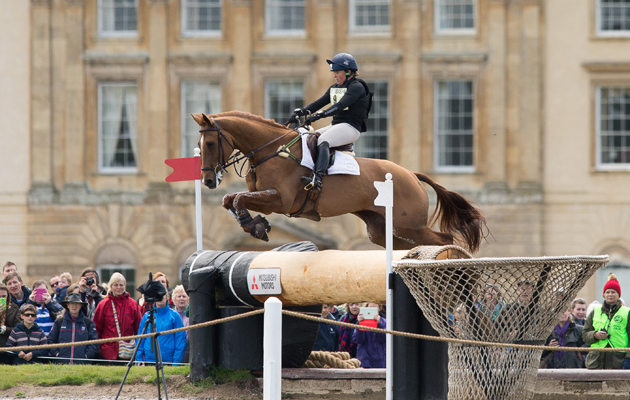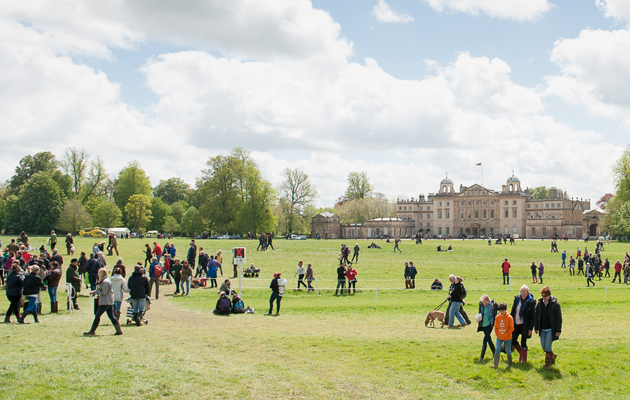How was your Mitsubishi Motors Badminton Horse Trials Saturday? Did you get to the great event early, march round the shops, tripping over dog leads as you went, spend more money than you had planned, walk the course, watch someone fall off in the Lake, decide which of the horses you fancied taking home, enjoy a burger and a beer in the sun in front of the big screen, then collapse in a pile of exhaustion once you got home?
Or did you stay at home, glued to nearly six hours of non-stop, live, cross-country coverage with a big bag of Minstrels by your side?
For me, cross-country day at Badminton this year was something of an eye-opener.
Horse & Hound sent me to find out how the BBC programme is put together – and I got to go behind-the-scenes with one of the most competent, professional teams of people I have ever encountered.
Firstly, I discovered the Badminton Horse Trials, as the rights holder, provides the coverage for the BBC through a company called Chris Lewis Media – a similar arrangement to Formula 1 motor racing.
Chris is the executive producer. He worked for the BBC for 34 years as a senior producer before setting up his own company, and they were the ones that covered the equestrian events at the London Olympics in 2012.
In a compound near Badminton’s media centre are four enormous trucks with pop-out sides that make the most impressive eventing lorries look like tin cans. The “scanner” truck is the central hub, and I can only liken it to a spaceship. Here producer Michael Cole and director Gerry Morrison sit alongside several others in front of a bank of screens and desks full of mysterious buttons and switches.
At 9am they run through checks of all the 15 cameras out on course – a few jump judges’ cars and portaloos are in shot, and Chris radios Badminton’s James Willis to ask for them to be moved a few feet to somewhere less obvious. Camera angles and tracking shots are run through. We see Oliver Townend wading through the Mirage Pond on his final course-walk.
Next door sits second unit director Nick Turner. There are so many cameras involved on cross-country day that Nick is in charge of a section from fences 15 to 23.
“It’s a marathon, not a sprint,” he says. “No other sport has the same intricacies involved. This is a really complicated day and you never know how it is going to pan out.”
I meet Simon Roper from PinPoint Visualisation, who is responsible for the brilliant 3D animation of the course, and he explains how the cross-country map is created.
At 11.15am the sound checks take place, and Gerry Morrison says to his team: “Good luck. It’s going to be a long day, but hopefully an enjoyable one.”
As they count down to transmission, I am struck by the air of calm competence. I know nothing about this world, but these people are clearly experts – and love what they do. And they are much more knowledgeable about eventing than I had expected – they know exactly who the riders are, what they have done, which horse they are riding, how they might be expected to perform.
The familiar red colours of Paul Tapner, first to go, are shown on screen, and we’re off. From this moment until Mark Todd, last on course with Oloa, gallops through the finish flags, Gerry, Michael, Nick and their teams must make thousands of decisions at lightning-speed – and get them right. They must react, anticipate, compute and adjust. Voices – or heart-beats – aren’t raised; the atmosphere is almost Zen-like.
Over in a remarkably cramped box in the grandstand, Mike Tucker and his fellow commentators are at full throttle. This is the first time Harry Meade has joined old pros Mike and Ian Stark, but he is an instant hit.
To all those who criticise Mike for making the odd mistake – I’d like to see you talk for that length of time without a break without the odd slip of the tongue. He anchors the whole thing – remember that this is nearly six hours of live coverage, and it is an extraordinary feat under pressure.
Behind the grandstand, Clare Balding is flitting about, interviewing riders after their rounds for the two-hour, edited programme that will go out on BBC2 on Sunday. Off camera, she gives Bettina Hoy a huge hug after Bettina’s terrific cross-country round, and sympathises with her old friend Tina Cook after her dunking in the Lake.
After the live programme has finished, the crew in the scanner truck will work until around 3am putting the overnight edit together.
By that time, I had been asleep for several hours. I had spent about half of their working day with this clever, committed group of people and I was wiped out. But I can easily stay up for the same length of time when writing a report for Horse & Hound on a major event like Badminton.
When you are doing a job you are passionate about, you want to tell a story in the best way you can. That’s what the BBC – and Chris Lewis Media – do.




